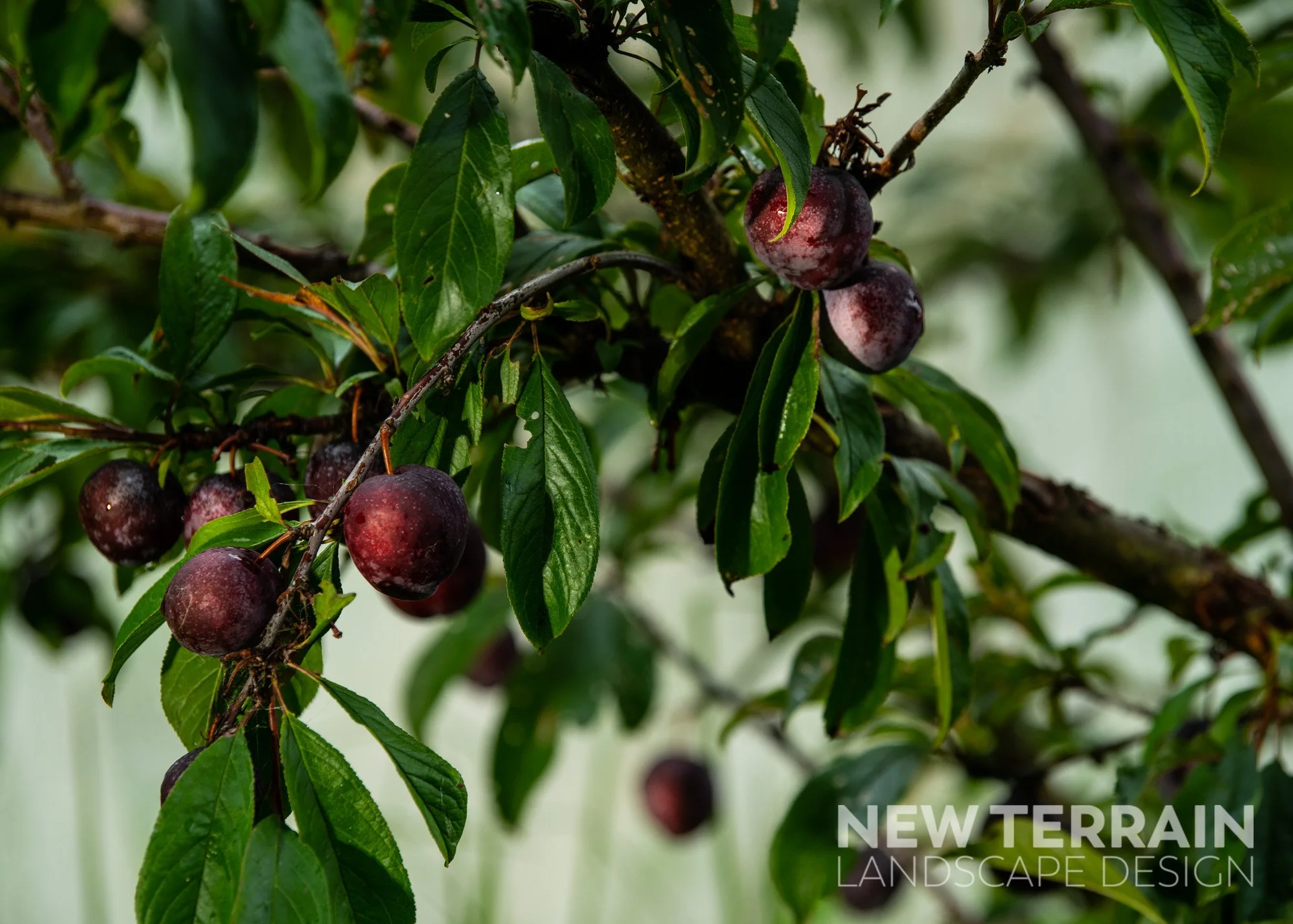7 Gardening Tips for Growing Plums & Other Stone Fruit
Summer plums are ready to pick at the end of March this year. A summer that turned out to have so many perfect days has led us into an autumn with some beautiful deep purple plums. After several difficult years of weather and a spring windstorm that blew away the blossoms of of most of my fruit trees, I was able to put a lot of love into my Elephant Heart plum tree and get a decent harvest this year. Knowing how to get fruit can sometimes seem pretty easy when everything is favourable; other times a handful of fruit off a young tree can seem like a big reward for the soil care, pruning, and pest control that forms a tree that will produce an abundance in years to come.
Caring for and growing stone fruit such as peaches, plums and nectarines in the colder temperate climate of the Australian Blue Mountains can be challenging because there are several issues that can affect the growth and productivity of these popular varieties of fruit trees.
7 STEPS TO GROWING GREAT PLUMS AND OTHER STONEFRUIT
I personally prefer the sweeter red-fleshed varietes of dwarf Japanese plums such as Satsuma or Elephant Heart that are known for their large size, sweet flavor, and beautiful deep red skin. I tend to prefer dwarf varieties of stone fruit because they tend to be grafted onto more disease-resistant root stock and their smaller size means that you can have a tree that is bred to be a heavy producer without taking up too much space in the garden. Other varieties of Japanese plums have similar habits and needs so here are some tips for growing them:
Location: Like most stone fruit, plums thrive in full sun and well-draining soil. They are also sensitive to frost, so make sure to plant them in an area that is protected from late spring frosts. In the temperate regions such as the Blue Mountains, gardens at higher altitudes can mean that frosts can be common occurrences throughout the winter month. It’s best to plant them in a spot where they can can have access to sun in the mornings, even in the winter months.
Planting: It’s generally preferable to plant young stone fruit trees when they’re available as bare-root bagged plants in the winter months. They’re more widely available at this time and planting them in the ground in the winter months means that they’ll be ready to get established once the spring weather arrives. If you’re Plant Elephant Heart plums in the late fall or early spring. Make sure the planting hole is large enough to accommodate the root system of the tree, and that the graft union is 2-3 inches above the soil line.
Watering: During the first year of establishing your tree, water your Elephant Heart plum tree deeply once a week during hot, dry weather. At other times, simply putting your finger in the soil around the base of the roots to see if the soil has moisture will tell you whether or not you need to water the tree. Avoid overwatering, which can lead to root rot.
Fertilizing: Fertilize your tree with a balanced fertilizer in the spring immediately after flowering and again in the summer when the tree is setting fruit. Follow the manufacturer's instructions for application rates.
Pruning: While in warmer areas of Australian that aren’t prone to damp, frosty winters you can prune your stone fruit tree in the winter, it can be a serious mistake to prune your trees in colder climates. Doing so can expose the freshly cut wounds of your stonefruit trees to Silver Leaf disease, a serious fungal infection that can kill your tree if not controlled early enough. Prune your Elephant Heart plum tree in the early spring after the risk of frost has passed to remove any damaged or diseased branches. Pruning is best done immediately after flowering. Thinning out crowded or crossing branches in summer to improve air circulation and light penetration will improve the growth of tree and fruit and reduce the chance of disease.
Harvesting: Elephant Heart plums are typically ready for harvest in late February or March. They are ripe when they are slightly soft to the touch and the skin has turned a deep, dark red color.
Don’t let your fruit tree grow fruit for at least its first year in the ground. This is true of most fruit trees. Growing a fruit is a very expensive thing to do for a young tree- it has to divert an enormous amount of its resources to making a fruit. New fruit in the first year can be gently removed by pinching off with your fingers when they’re still quite small. The first year your tree is in the ground, you want it to put as much of its growth into root development as possible. Allowing your trees to spend its first year getting as strong as possible will ensure a strong and healthy tree that will be ready to grow fruit in the coming years.
New Terrain Landscape Design loves to create gardens that feature edible landscapes. We can use our specialised knowledge to help you grow a productive garden that will last for years.




